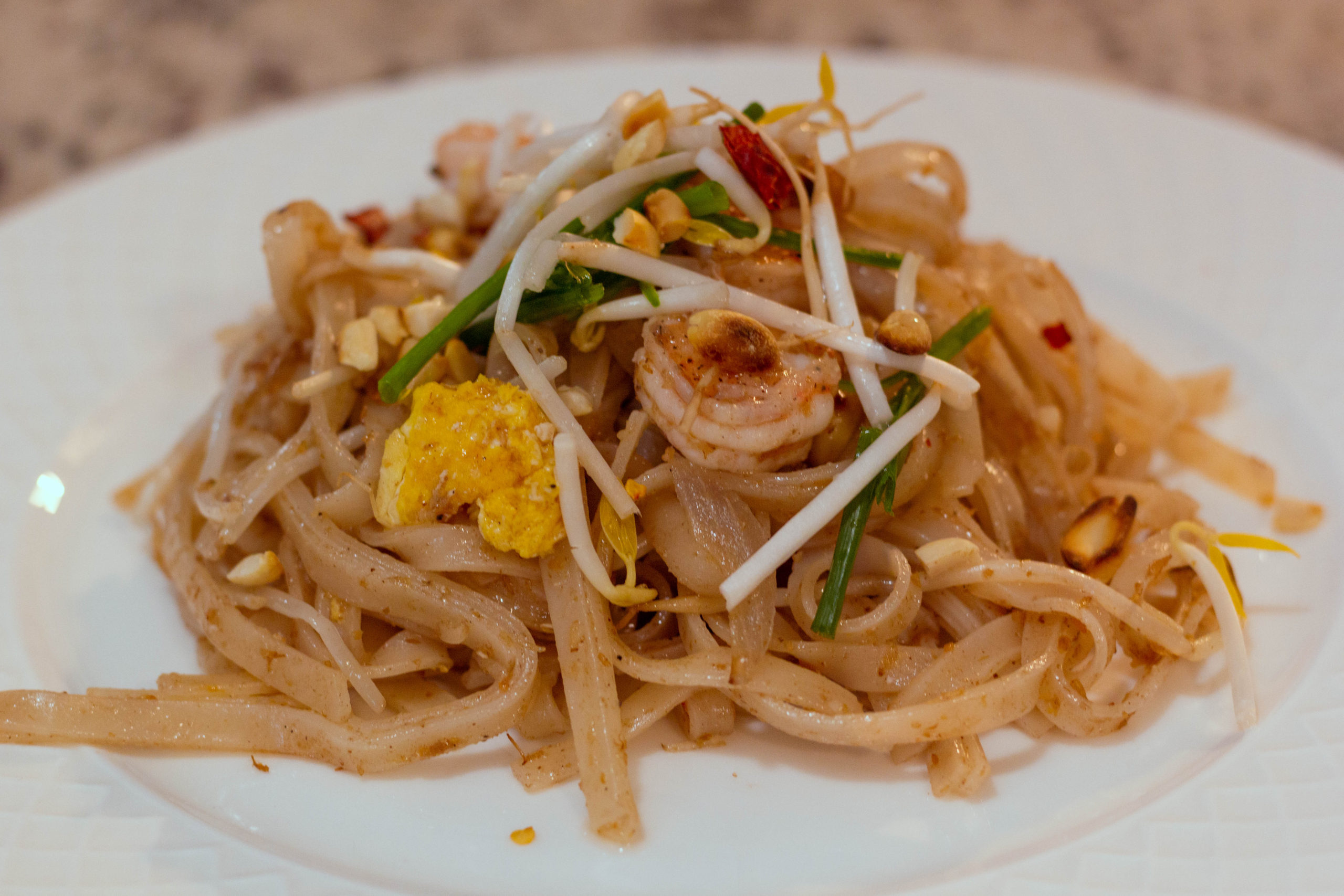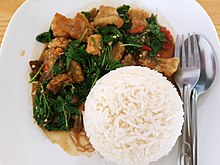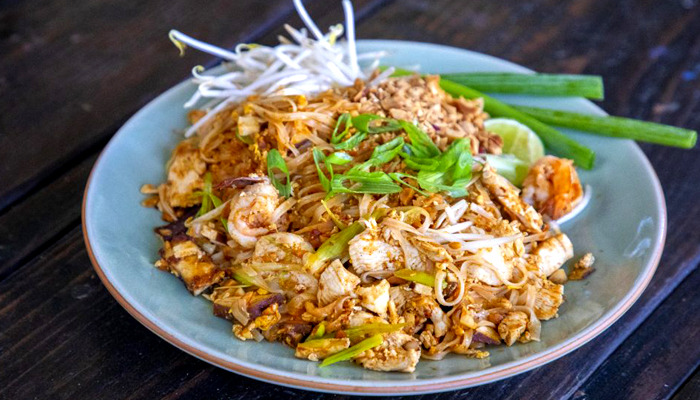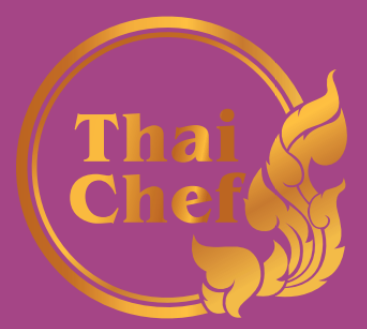Introduction

Thai cuisine is renowned for its bold flavors, fresh ingredients, and vibrant colors. To truly appreciate the intricacies of Thai dishes, it is essential to understand the culinary terms used in the cuisine. One such term is “pad,” which translates to “fried” in English. In Thai cuisine, the word “pad” is often used to describe dishes that are stir-fried or sautéed. From the famous Pad Thai to other variations like Pad See Ew and Pad Kra Pao, these dishes showcase the art of frying and the unique flavors that Thai cuisine has to offer. Join us on this culinary journey as we unravel the mysteries behind the meaning of “pad” in Thai cuisine.
Introduction To Thai Cuisine And The Importance Of Understanding Culinary Terms
Thai cuisine is a vibrant and diverse culinary tradition that is beloved worldwide. Known for its bold flavors, fresh ingredients, and intricate preparation techniques, Thai cuisine offers a sensory experience like no other. Understanding the culinary terms used in Thai cooking is crucial in order to fully appreciate the complexity and authenticity of the dishes. From the meaning of “pad” to the various flavors and techniques associated with it, delving into the world of Thai culinary terms allows for a deeper understanding and enjoyment of this rich and diverse cuisine.
Brief Overview Of The Term Pad And Its Significance In Thai Cuisine
Pad is a fundamental term in Thai cuisine that refers to the stir-frying technique. This method involves cooking ingredients in a wok or pan over high heat, allowing for quick and flavorful results. Pad dishes showcase the versatility of Thai cuisine, as they can include a wide variety of ingredients such as meats, vegetables, and noodles. The significance of pad in Thai cuisine lies in its ability to create vibrant and delicious dishes that highlight the bold flavors and fresh ingredients that are characteristic of this culinary tradition.
Understanding Pad Thai

Pad Thai is a traditional Thai dish that has gained widespread popularity around the world. It is made with stir-fried rice noodles, eggs, tofu, beansprouts, and a combination of spices that create a harmonious blend of flavors. The name “Pad Thai” translates to “Thai stir fry,” highlighting the cooking technique used to prepare this dish. With its unique combination of ingredients, Pad Thai offers a balance of sweet, sour, and savory flavors that make it a favorite among both locals and tourists. Whether enjoyed as street food or in a restaurant, Pad Thai is a must-try dish for anyone exploring Thai cuisine.
Exploring The History And Origins Of Pad Thai
Pad Thai holds a fascinating history that showcases the cultural exchange between Thailand and China. It is believed that the dish was introduced to Thailand by Chinese traders and immigrants. Over time, the recipe underwent adaptations to suit the Thai palate, incorporating local ingredients and flavors. In the 1930s, the government promoted Pad Thai as a national dish to encourage Thai identity and reduce rice consumption. Today, it is enjoyed worldwide and has become a symbol of Thai cuisine. Exploring the origins of Pad Thai allows us to appreciate its rich heritage and the culinary heritage of Thailand.
Distinctive Features Of Pad Thai And Its Variations
Pad Thai is known for its unique combination of flavors and textures. The dish typically consists of stir-fried rice noodles, eggs, tofu, bean sprouts, and a tangy sauce made from tamarind paste, fish sauce, sugar, and lime. It is often garnished with peanuts, lime wedges, and fresh cilantro.
While the basic recipe remains consistent, there are various regional and personal variations of Pad Thai. In some versions, shrimp or chicken may be added for a protein boost. Other variations might include different vegetables, such as carrots or bell peppers. Some chefs even experiment with adding pineapple for a hint of sweetness. Despite these variations, Pad Thai always maintains its signature balance of sweet, sour, salty, and spicy flavors.
Decoding Pad See Ew

Pad See Ew is another popular dish in Thai cuisine. “Pad See Ew” translates to “fried soy sauce noodles” in English. This dish typically consists of wide rice noodles stir-fried with soy sauce, garlic, and a choice of protein such as chicken, beef, or shrimp. It may also include vegetables like Chinese broccoli or carrots. The key to a delicious Pad See Ew is the smoky flavor created by the high heat during the stir-frying process. The combination of chewy noodles, savory sauce, and crunchy vegetables makes Pad See Ew a favorite among locals and tourists alike.
Meaning And Composition Of Pad See Ew
Pad See Ew, which translates to “fried soy sauce noodles,” is a popular Thai dish known for its delicious combination of flavors. The dish primarily consists of wide rice noodles that are stir-fried with a savory soy sauce, garlic, and a choice of protein such as chicken, beef, or shrimp. It may also include vegetables like Chinese broccoli or carrots for added texture and freshness. The smoky flavor imparted by high heat during the stir-frying process adds depth to the dish. Pad See Ew is a satisfying and comforting noodle dish that showcases the rich and aromatic flavors of Thai cuisine.
Popular Ingredients And Cooking Techniques Used In Pad See Ew
Pad See Ew, a beloved Thai dish, often includes a combination of wide rice noodles, tender slices of protein (such as chicken, beef, or shrimp), and stir-fried vegetables like Chinese broccoli or carrots. The dish gets its distinct flavor from a savory soy sauce and garlic-based sauce, which gives it a rich and umami taste. To achieve the perfect texture, the noodles are cooked until slightly chewy and then stir-fried on high heat, resulting in a smoky and slightly charred flavor. Overall, Pad See Ew is a delightful balance of flavors and textures. (Reference: )
Demystifying Pad Kra Pao

Demystifying Pad Kra Pao: Unraveling the Meaning and Flavors of a Thai Culinary Gem
Pad Kra Pao, known as Thai Basil Stir-Fry, is a beloved dish that showcases the vibrant and aromatic flavors of Thai cuisine. The term “pad” refers to the stir-fry cooking technique, while “kra pao” translates to holy basil. This dish typically combines a choice of protein such as pork, chicken, or seafood, stir-fried with holy basil, garlic, chili, and soy sauce. The result is a harmonious blend of spicy, savory, and fragrant flavors that tantalize the taste buds. Pad Kra Pao is often served over steamed rice and topped with a fried egg for the perfect combination of textures and flavors. So next time you come across Pad Kra Pao on a Thai menu, embrace the opportunity to experience the rich and dynamic flavors of this iconic dish. (Reference: )
Interpreting The Meaning Of Pad Kra Pao
Pad Kra Pao, also known as Thai Basil Stir-Fry, is a popular dish in Thai cuisine. The term “pad” refers to the stir-fry cooking technique, while “kra pao” translates to holy basil. This dish typically features a choice of protein such as pork, chicken, or seafood, stir-fried with holy basil, garlic, chili, and soy sauce. The combination of these ingredients creates a harmonious blend of spicy, savory, and fragrant flavors. When you come across Pad Kra Pao on a Thai menu, know that you’ll be delighting your taste buds with a flavorful stir-fry enhanced by the aromatic essence of holy basil.
Signature Flavors And Ingredients Of Pad Kra Pao
Pad Kra Pao is known for its bold and vibrant flavors that tantalize the taste buds. One of the key ingredients is holy basil, which infuses the dish with its unique peppery and slightly sweet taste. The dish also incorporates garlic, chili, and soy sauce, adding a spicy and savory kick. Additionally, Pad Kra Pao often includes a choice of protein such as pork, chicken, or seafood, which adds depth and richness to the stir-fry. The combination of these ingredients creates a harmonious blend of flavors that make Pad Kra Pao a delicious and satisfying Thai culinary experience.
Unveiling Pad Krapow Moo Saap

Pad Krapow Moo Saap is a popular Thai dish that translates to “stir-fried holy basil with pork.” It is a flavorful and aromatic stir-fry that combines the bold and peppery taste of holy basil with the savory and tender pork. The dish is traditionally served with steamed rice and a fried egg on top, adding a touch of richness and texture. Pad Krapow Moo Saap is known for its intense and satisfying flavors, making it a favorite among locals and visitors alike. It showcases the essence of Thai cuisine, with its harmonious blend of herbs, spices, and protein.
Translation And Interpretation Of Pad Krapow Moo Saap
Pad Krapow Moo Saap translates to “stir-fried holy basil with pork” in English. This classic Thai dish showcases the combination of bold and peppery flavors from the holy basil with tender and savory pork. The word “krapow” refers to the holy basil, which is a key ingredient in the dish. “Moo” means pork, representing the protein element of the stir-fry. The word “saap” signifies the crispy and flavorful texture of the pork in the dish. Together, Pad Krapow Moo Saap embodies the essence of Thai cuisine with its aromatic herbs, spices, and delicious protein-rich stir-fry.
Unique Characteristics And Ingredients Of This Dish
Pad Krapow Moo Saap is known for its unique characteristics and flavorful ingredients. The dish is distinguished by the vibrant and aromatic holy basil, which imparts a peppery and herbaceous taste. The tender and succulent pork adds a savory element to the stir-fry. The combination of these ingredients creates a burst of flavors that is further enhanced by the addition of garlic, chilies, and fish sauce. This dish is typically served over steamed jasmine rice, allowing the rich sauce to soak into every grain. The result is a satisfying and flavorful Thai dish that is loved by many.
Conclusion

In conclusion, the term “pad” holds a significant place in Thai cuisine, representing the stir-frying technique that is widely used in various dishes. From the popular Pad Thai to Pad See Ew and Pad Kra Pao, each dish showcases unique flavors and ingredients that contribute to the rich tapestry of Thai cuisine. By understanding the meaning of “pad” and its role in Thai culinary traditions, we can truly appreciate the diverse range of flavors and dishes that this vibrant cuisine has to offer. So the next time you delve into Thai cuisine, remember to savor the flavors of “pad.”
Summary Of Different Meanings Of Pad In Thai Culinary Context
The term “pad” holds multiple meanings in Thai culinary context. It primarily refers to the stir-frying technique, which is a common cooking method in Thai cuisine. However, “pad” is also used as a descriptive term for various dishes that involve stir-frying. For example, Pad Thai is a popular dish that features stir-fried rice noodles. Pad See Ew consists of stir-fried wide rice noodles, and Pad Kra Pao is a stir-fried dish with basil. Each dish showcases unique flavors and ingredients, highlighting the versatility of Thai cuisine.
Appreciating The Diverse Range Of Flavors And Dishes In Thai Cuisine
Thai cuisine is celebrated for its diverse range of flavors and dishes, offering something to please every palate. From the fiery and aromatic spices of dishes like Pad Kra Pao to the delicate balance of sweet, sour, and salty flavors found in Pad Thai, Thai cuisine is a culinary adventure. Each dish showcases unique ingredients and cooking techniques, creating a harmonious blend of flavors and textures. Whether you’re a fan of bold and spicy dishes or prefer milder flavors, Thai cuisine has something to satisfy every taste bud. Exploring the rich tapestry of Thai dishes is a delightful journey through a world of tantalizing flavors.
Frequently Asked Questions: What Does “Pad” Mean in Thai?
Q1: What does “Pad” mean in Thai cuisine?
A1: In Thai cuisine, the word “Pad” refers to stir-frying. It is a common cooking method that involves tossing ingredients in a hot wok or pan with oil over high heat. “Pad” dishes are known for their vibrant flavors, aromatic spices, and the use of fresh ingredients.
Q2: Are all Thai stir-fried dishes called “Pad”?
A2: Yes, in general, most Thai stir-fried dishes are named with the word “Pad” followed by the main ingredient or a descriptive word. For example, “Pad Thai” is a famous noodle dish, “Pad Krapow” is a spicy stir-fry with basil, and “Pad See Ew” is a dish made with wide rice noodles.
Q3: What are some popular “Pad” dishes in Thai cuisine?
A3: There is a wide variety of mouth-watering “Pad” dishes in Thai cuisine. Some popular ones include:
- Pad Thai: Stir-fried rice noodles with eggs, tofu, shrimp, peanuts, and tamarind sauce.
- Pad Krapow: Spicy stir-fried meat (commonly chicken or pork) with holy basil, garlic, and chili.
- Pad See Ew: Stir-fried wide rice noodles with soy sauce, eggs, Chinese broccoli, and your choice of meat.
- Pad Prik Khing: Stir-fried meat (often pork or chicken) with red curry paste, green beans, and kaffir lime leaves.
- Pad Prik Sod: Stir-fried meat (such as beef or chicken) with fresh chili, onions, bell peppers, and Thai basil.
Q4: Is “Pad” limited to savory dishes only?
A4: No, “Pad” is not limited to savory dishes alone. There are also sweet versions of “Pad” dishes. One example is “Pad Thai Saku,” which is a dessert made with tapioca pearls cooked in a sweet coconut sauce.
Q5: Can I find “Pad” dishes in Thai restaurants outside of Thailand?
A5: Absolutely! Thai cuisine has gained immense popularity worldwide, and you can find “Pad” dishes in Thai restaurants almost everywhere. Whether you’re in Thailand or abroad, you can enjoy the diverse flavors and textures of these delicious stir-fried dishes.
Q6: Are “Pad” dishes spicy?
A6: The spiciness level of “Pad” dishes can vary. Some “Pad” dishes, like Pad Thai, are generally not very spicy. However, other dishes, such as Pad Krapow, can be quite spicy. You can always let the chef know your preferred spice level, and they can adjust it accordingly.
Q7: Can I customize “Pad” dishes to suit my dietary preferences or restrictions?
A7: Yes, Thai cuisine is quite adaptable, and many “Pad” dishes can be customized to suit different dietary preferences or restrictions. You can often choose your preferred protein or substitute it with tofu or vegetables. Additionally, you can ask the chef to adjust the level of spiciness or omit certain ingredients if needed.
Q8: Are “Pad” dishes typically served with rice?
A8: Yes, “Pad” dishes are usually served with a side of steamed jasmine rice. The rice helps balance the flavors and complements the stir-fry. However, you can also enjoy “Pad” dishes on their own or with other accompaniments, depending on your preference.
Q9: What is the significance of “Pad” in Thai culture?
A9: “Pad” dishes are an integral part of Thai culinary culture. The art of stir-frying reflects the Thai philosophy of harmony in flavors, where a diverse range of ingredients come together to create a balanced and delicious dish. It represents the vibrancy, versatility, and unique flavors of Thai cuisine.
Now that you have a better understanding of what “Pad” means in Thai cuisine, you can explore and enjoy the delectable world of Thai stir-fried dishes!

We are a small takeaway restaurant offering a great selection of food cooked by our Thai chef. Table spaces are limited, so please book in advance.